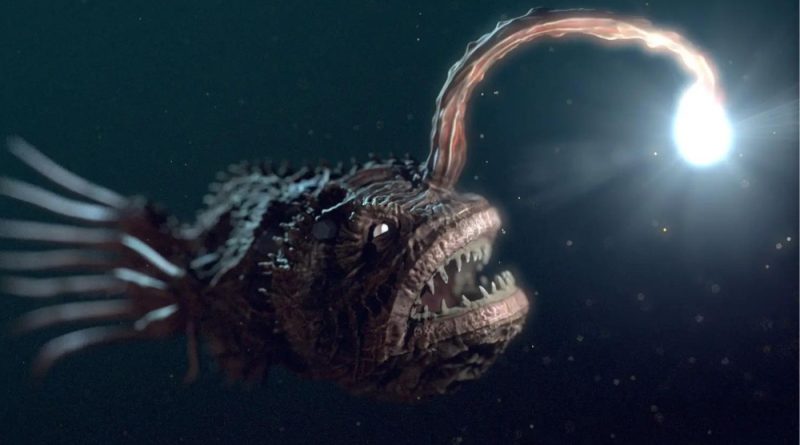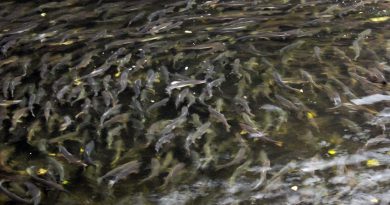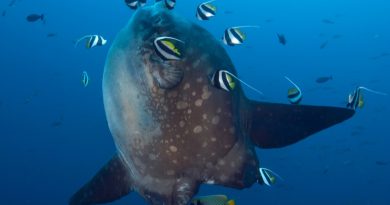The Mysteries of the Underwater World
Exotic Fish and Their Adaptations
The mysteries of the underwater world have always sparked fascination and curiosity among people. The ocean depths conceal many strange and fascinating creatures, especially fish.
Over millions of years of evolution, these aquatic animals have developed incredible adaptations to survive the unique environmental conditions of the ocean. In this article, we explore the mysteries of exotic fish and their incredible adaptability.
One of the most impressive examples of adaptation in the underwater world is the lanternfish. These mysterious creatures have light organs in their bodies that allow them to emit light in different colors and patterns. This adaptation is useful in the dark depths of the ocean, where sunlight is almost nonexistent. By producing their own light, lanternfish can attract prey, communicate with other members of their species, and even blend in with the environment. This ability to glow is a remarkable example of how fish have developed specialized adaptations to survive in extreme environments.
Another fascinating adaptation is the presence of electric organs in some fish species, such as electric eels. These organs allow these fish to generate powerful electric discharges, which they use to communicate, detect prey, and defend themselves. Electric eels can emit electric shocks of up to 600 volts, enough to stun or incapacitate prey. This adaptation is especially useful in low-visibility environments, where electricity can be used as an extra sense to navigate and locate food.
Some fish species have adapted to life in extreme environments, such as the deep ocean depths. In these regions, pressure is very high, and temperatures are extremely low. A notable example is the Antarctic icefish, also known as the Antarctic icefish. The blood of this fish contains a special protein that acts as a natural antifreeze, preventing its cells from freezing in low temperatures. Additionally, its body is highly compressible, allowing it to withstand the high pressures of the ocean depths. These adaptations enable the icefish to survive and thrive in hostile environments.
Adaptation is not limited to the physical conditions of the environment but also includes feeding. A famous example is the anglerfish, which is known for attracting prey with a bright appendage resembling a lure hanging in front of its mouth. When the prey approaches to investigate the lure, anglerfish are quick to swallow it. This ingenious strategy allows fish to efficiently obtain food and outsmart their prey. It shows how fish evolve through creative strategies to ensure their survival in the underwater world.
Additionally, some fish have surprising adaptations to protect themselves from predators. An interesting example is the porcupinefish, which has sharp spines on its body. When threatened, it inflates its body, and the spines serve as a powerful barrier against potential predators. This adaptation provides effective protection, as the spines are difficult to swallow or handle for other marine animals.
Another interesting example is sawfish, like the famous smalltooth sawfish. This fish has a long, thin jaw full of sharp, serrated teeth. This adaptation allows the sawfish to efficiently cut the flesh of prey, such as schools of fish, crustaceans, and squids. With its specialized jaws, it can quickly tear its prey into smaller pieces, making them easier to eat.
The adaptations of exotic fish are not limited to their size but also include their reproductive strategies. An interesting example is clownfish, which live in symbiosis with sea anemones. These fish have a protective mucus on their skin, which shields them from the stings of the sea anemone’s tentacles. They hide among the anemone’s tentacles and feed on leftover food that falls from the anemone’s mouth. Additionally, clownfish are known for their monogamy, where a couple inhabits an anemone and cares for their offspring together. This symbiotic relationship is a remarkable example of cooperation between different species in the underwater world.
The adaptability of exotic fish is a true marvel of nature. It allows these animals to survive and thrive in challenging environments, such as the deep ocean, icy waters, and even among other species. Studying these adaptations helps us understand the complexity of marine life and appreciate the incredible diversity of forms and behaviors in the underwater world.
Moreover, exploring these adaptations has important implications for science and medicine. Many features of exotic fish, such as tissue regeneration or the ability to withstand extreme conditions, can be studied and applied in biomedical research for the benefit of humans.
Conclusion:
In summary, the mysteries of the underwater world are endless, and we are amazed by exotic fish and their incredible adaptability. Each species exhibits unique characteristics and extraordinary survival strategies, offering a glimpse into the diversity and complexity of marine life.
Did you enjoy our article on The Mysteries of the Underwater World? Then be sure to comment and follow the continuance of this fascinating exploration into the depths of the ocean.




